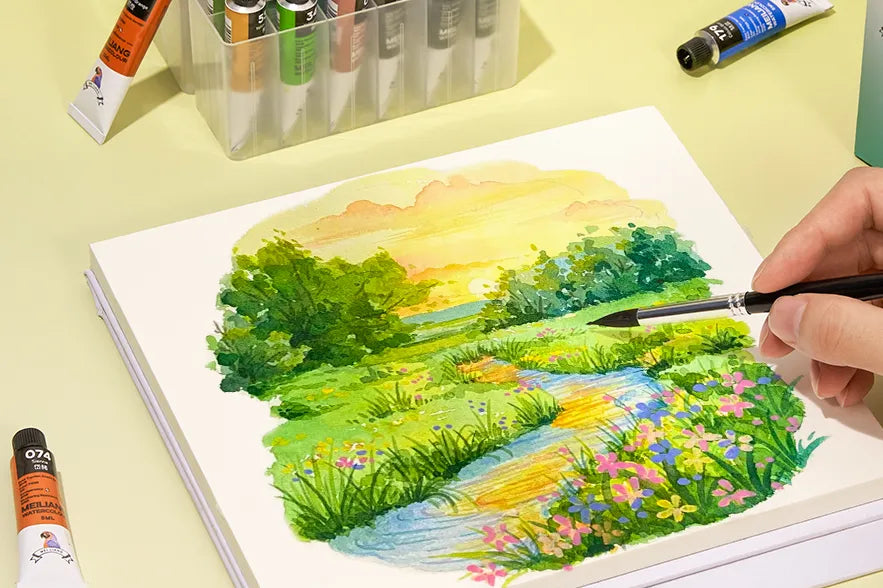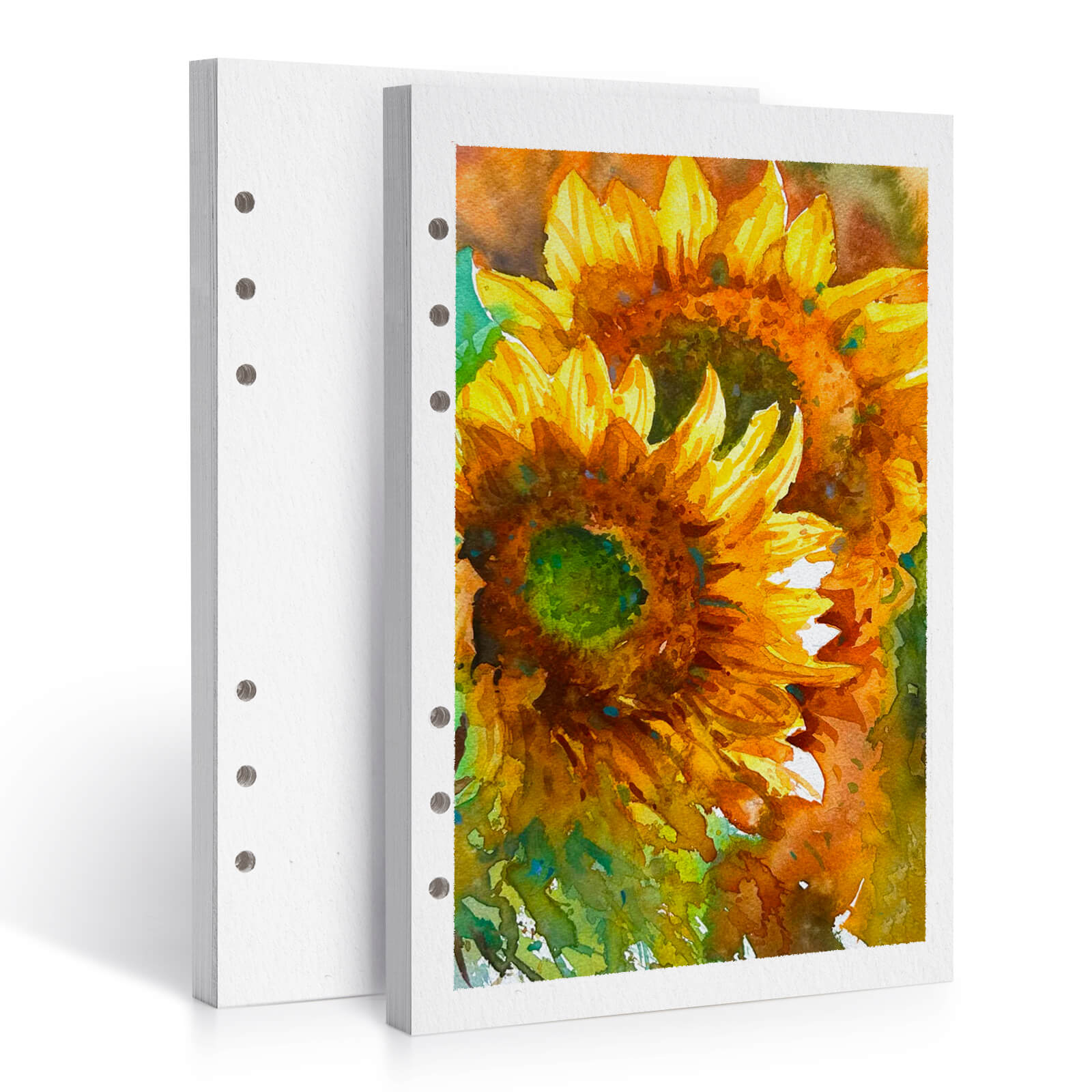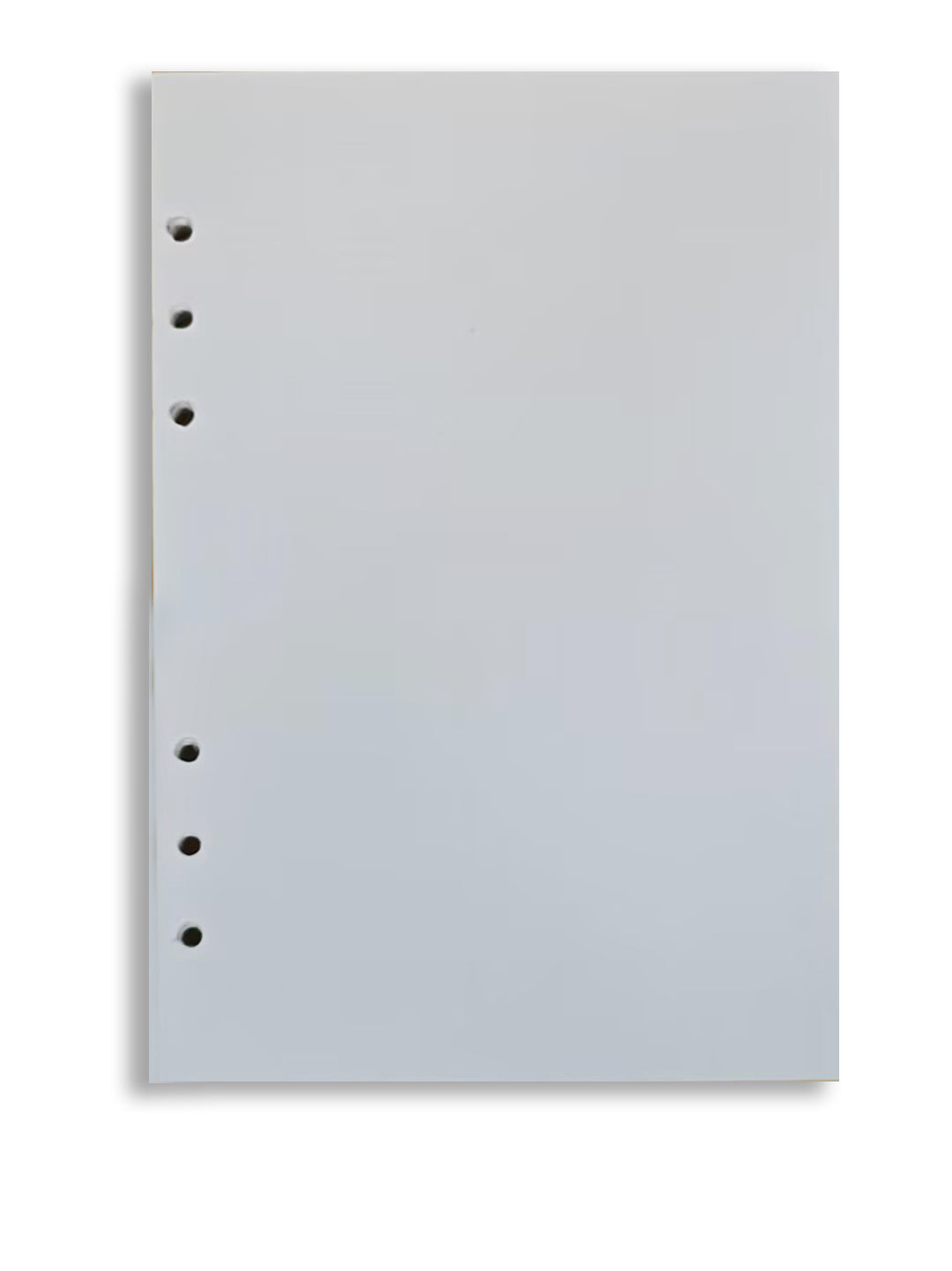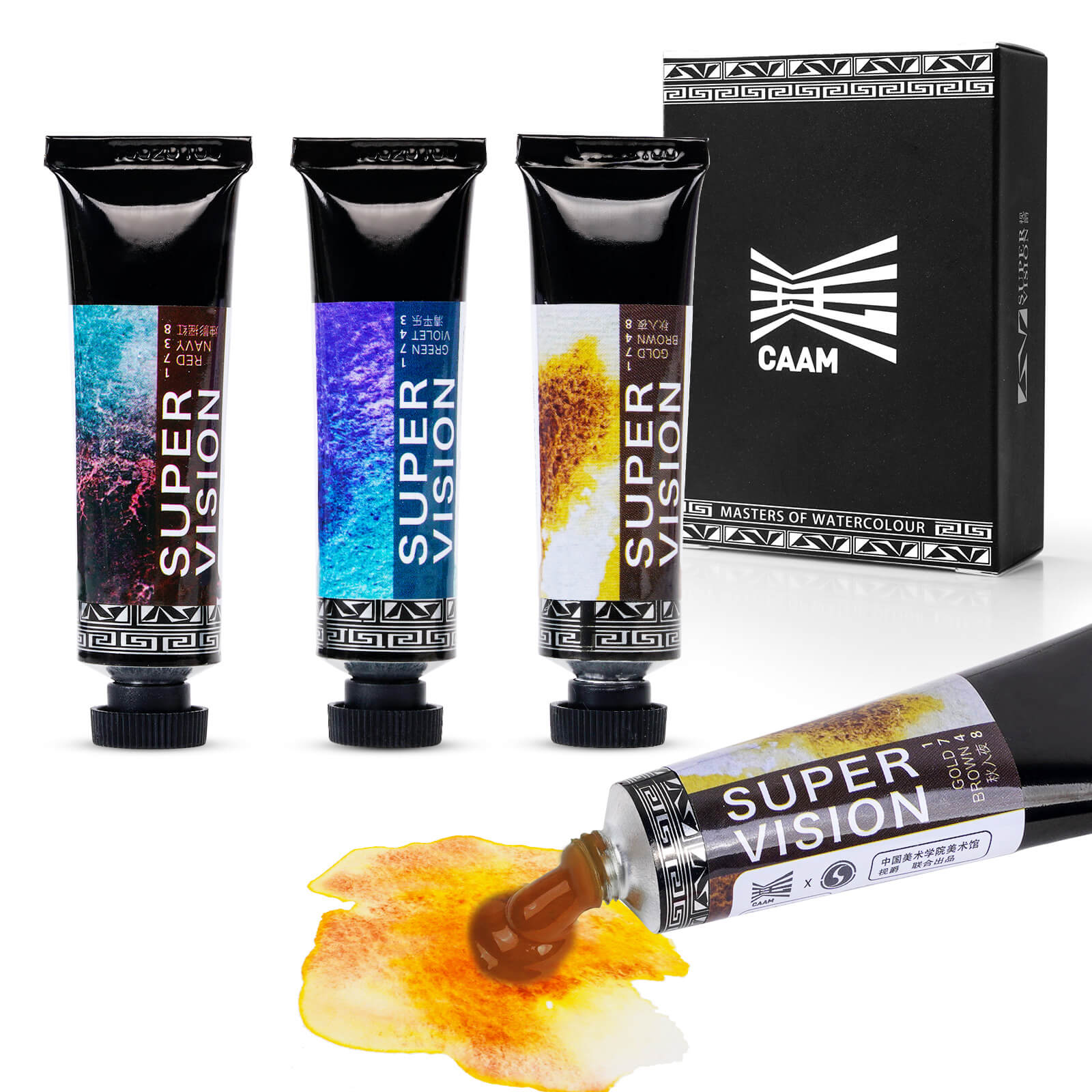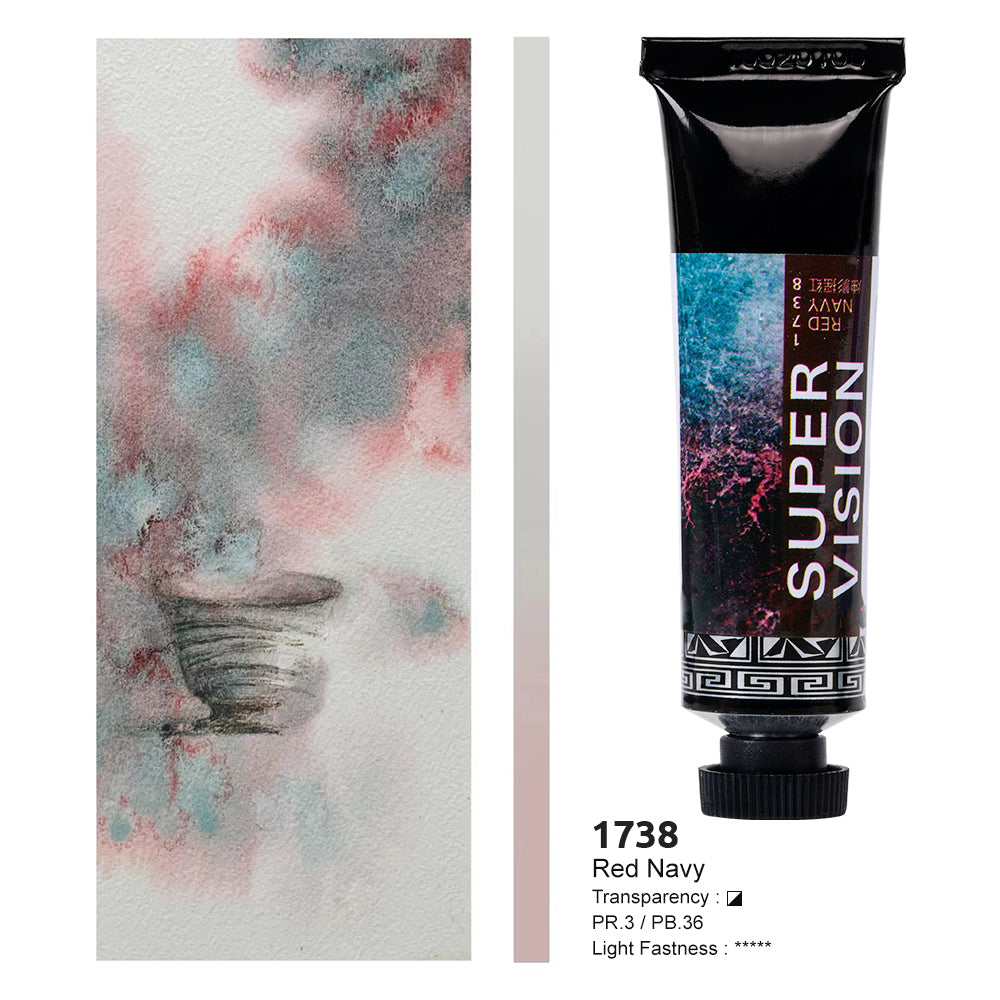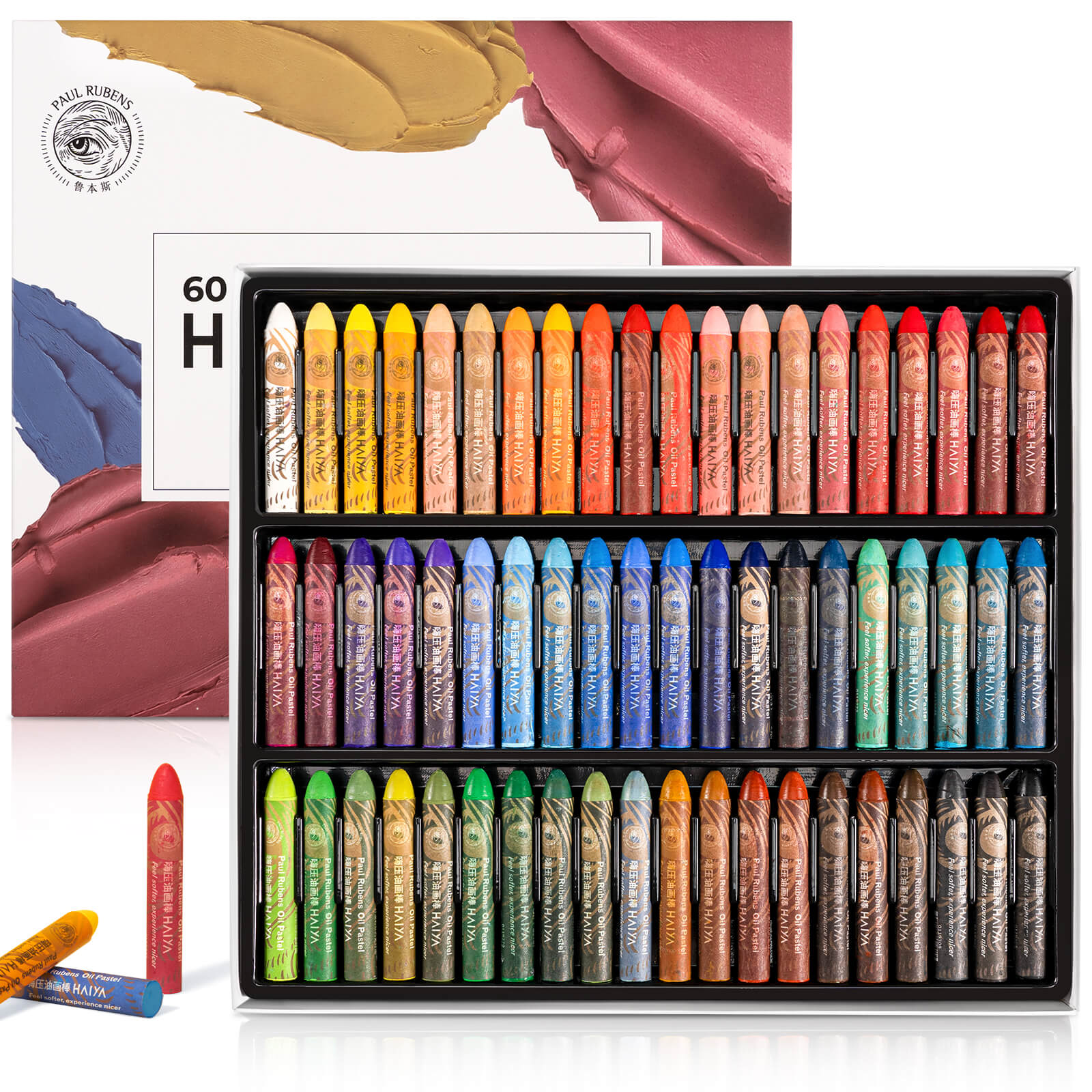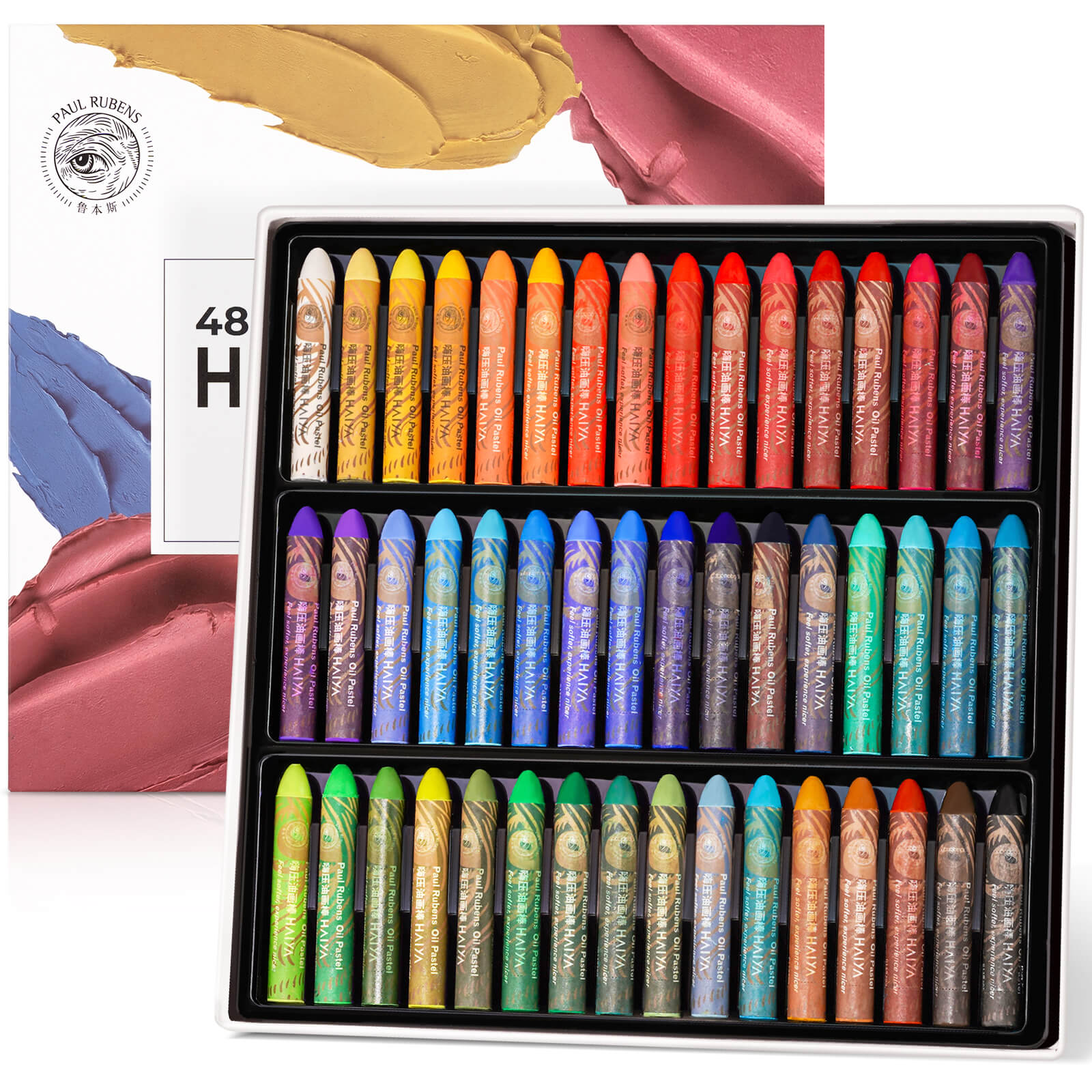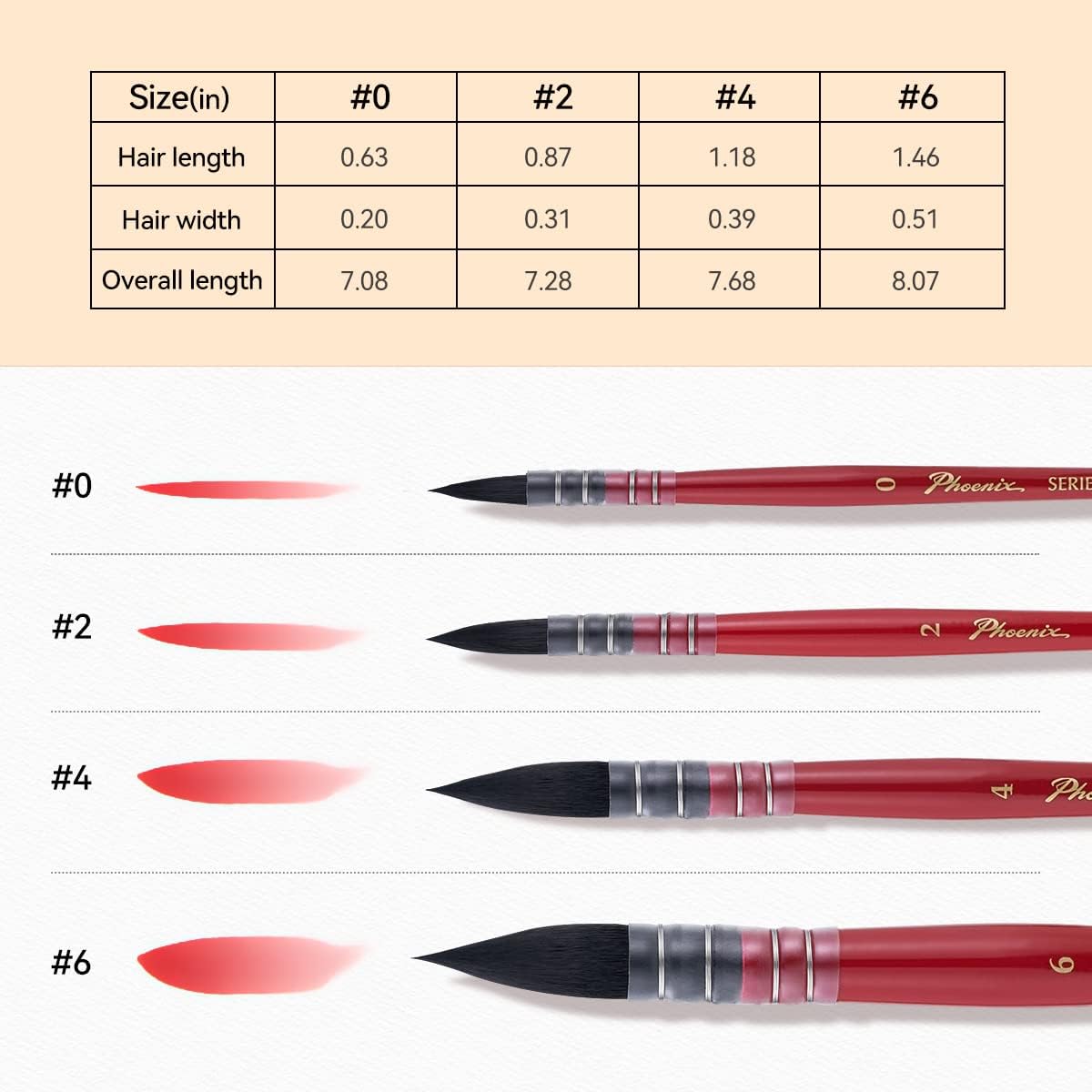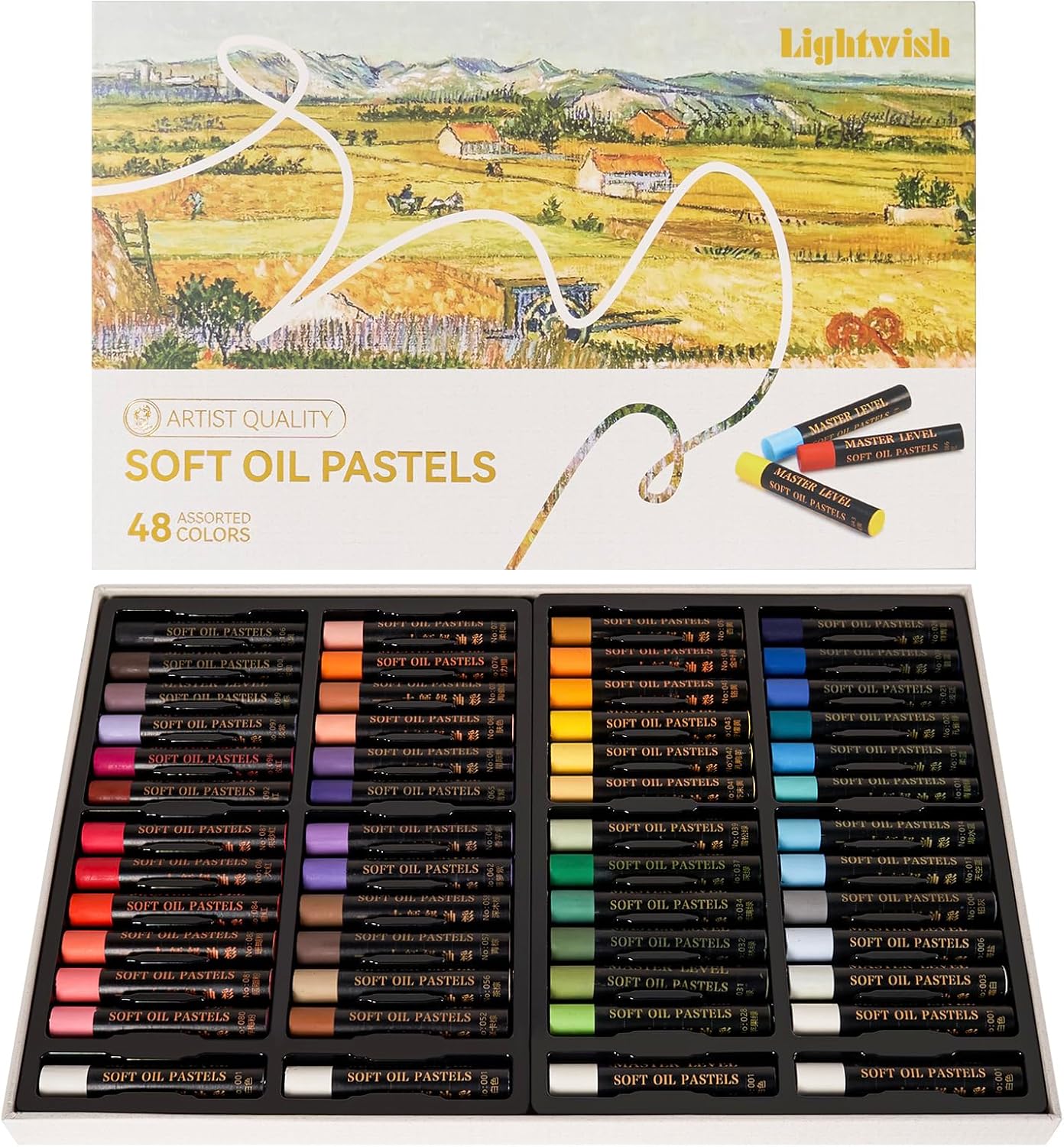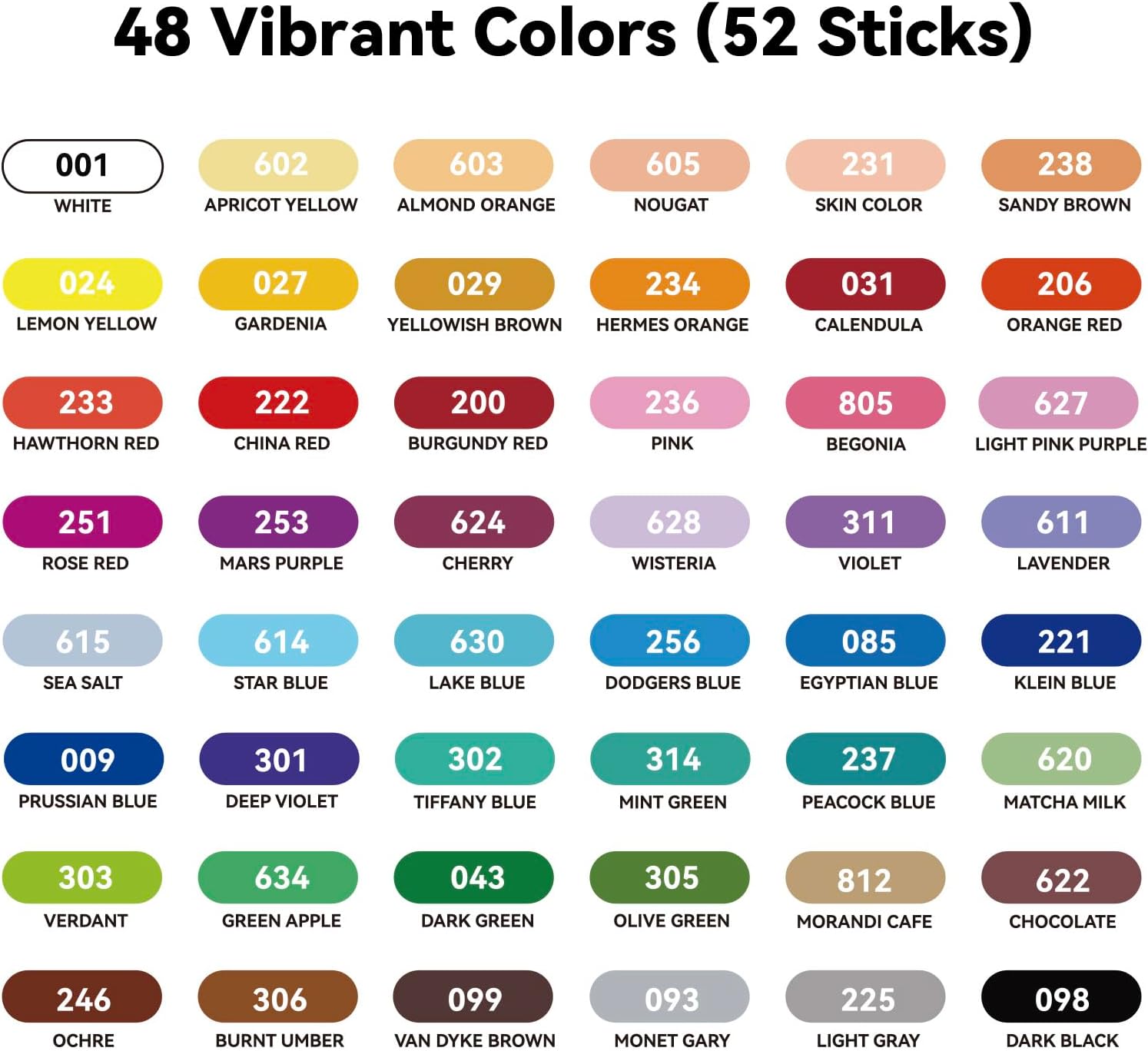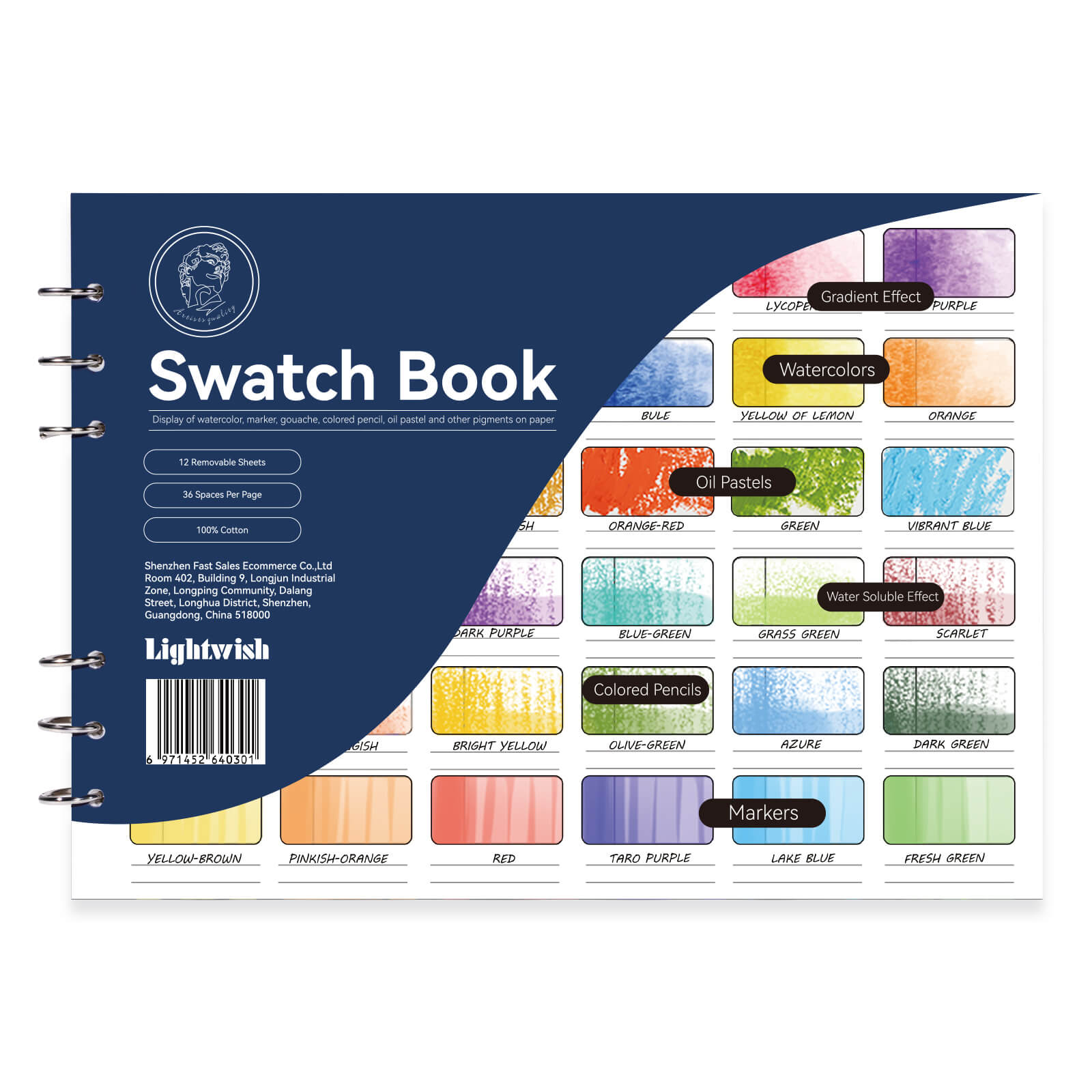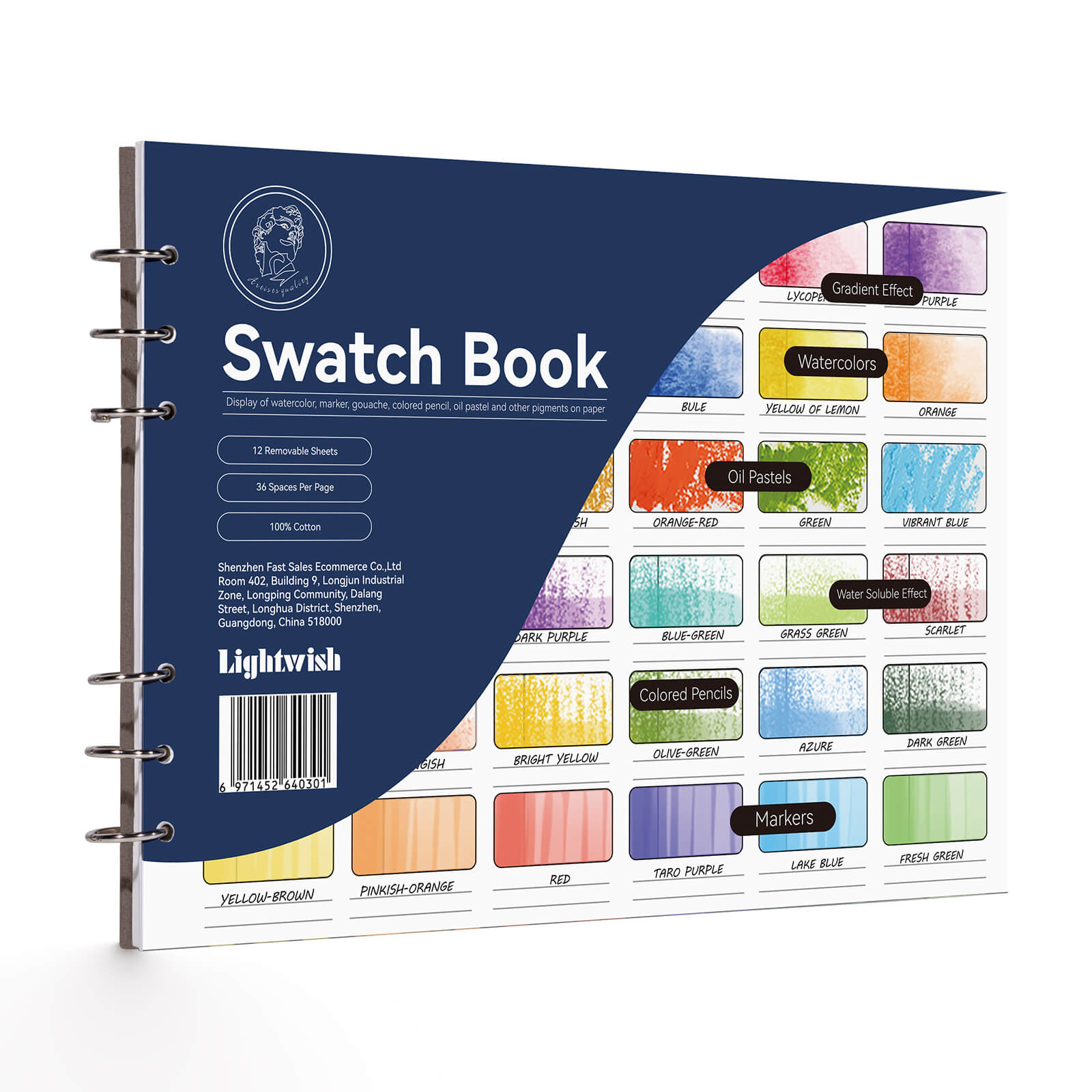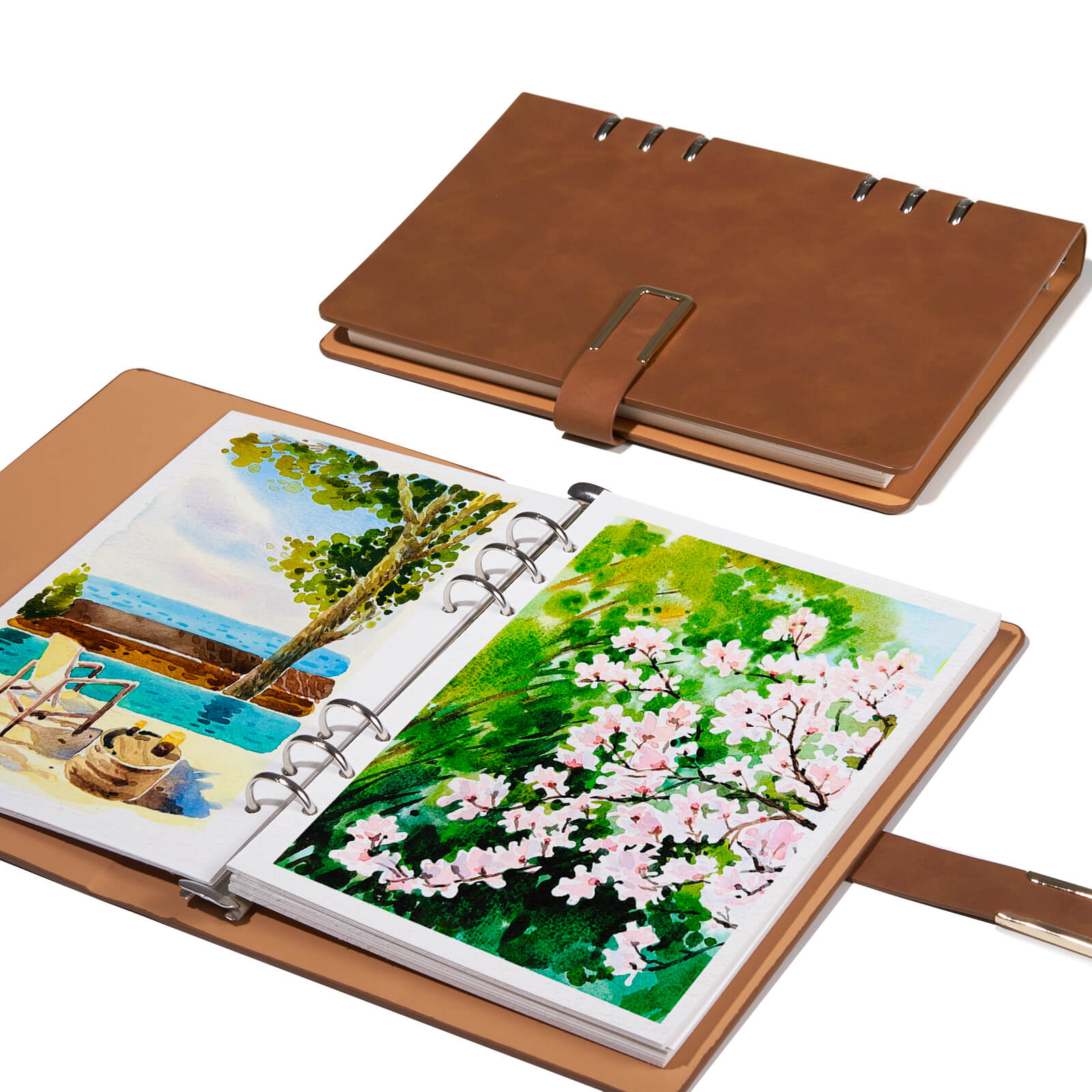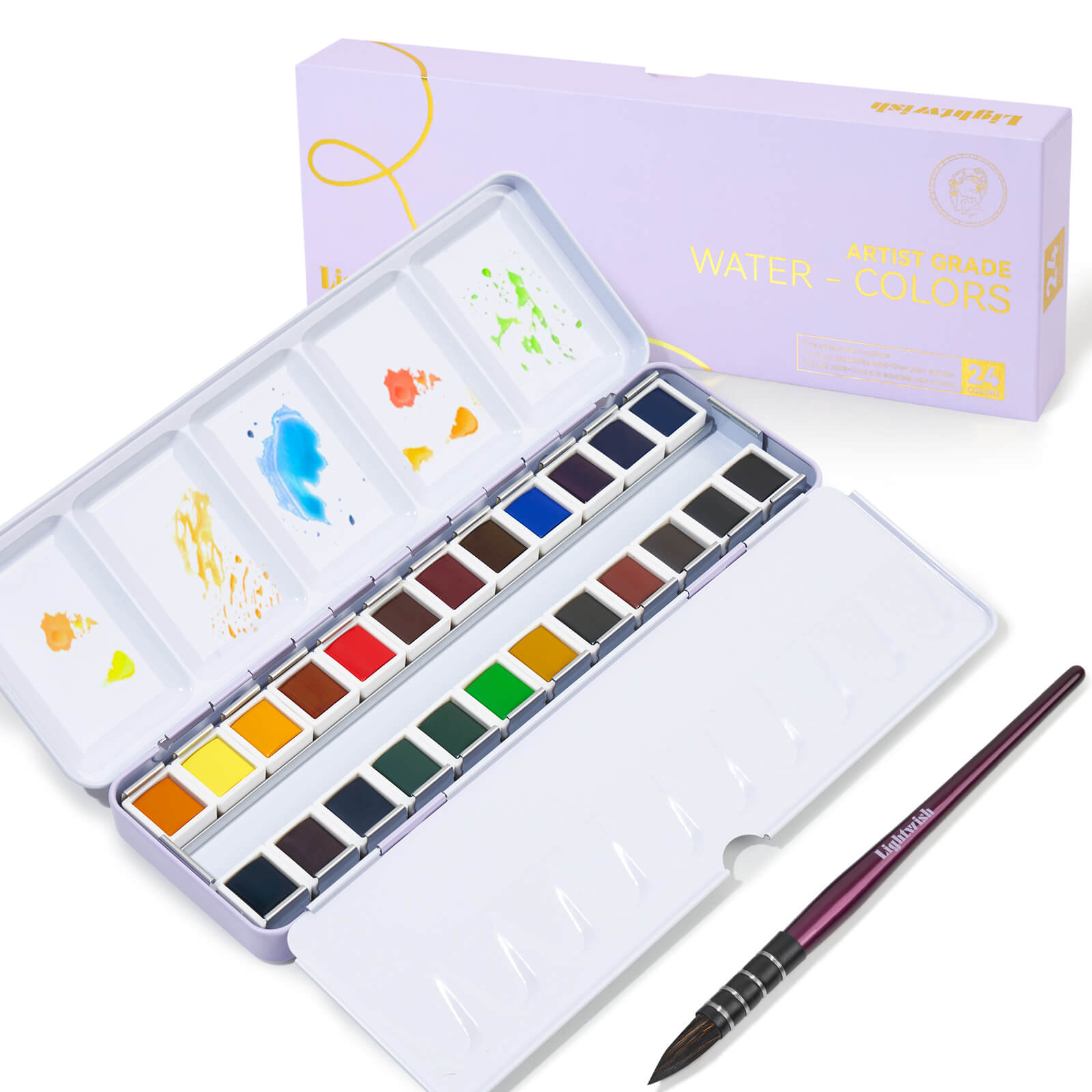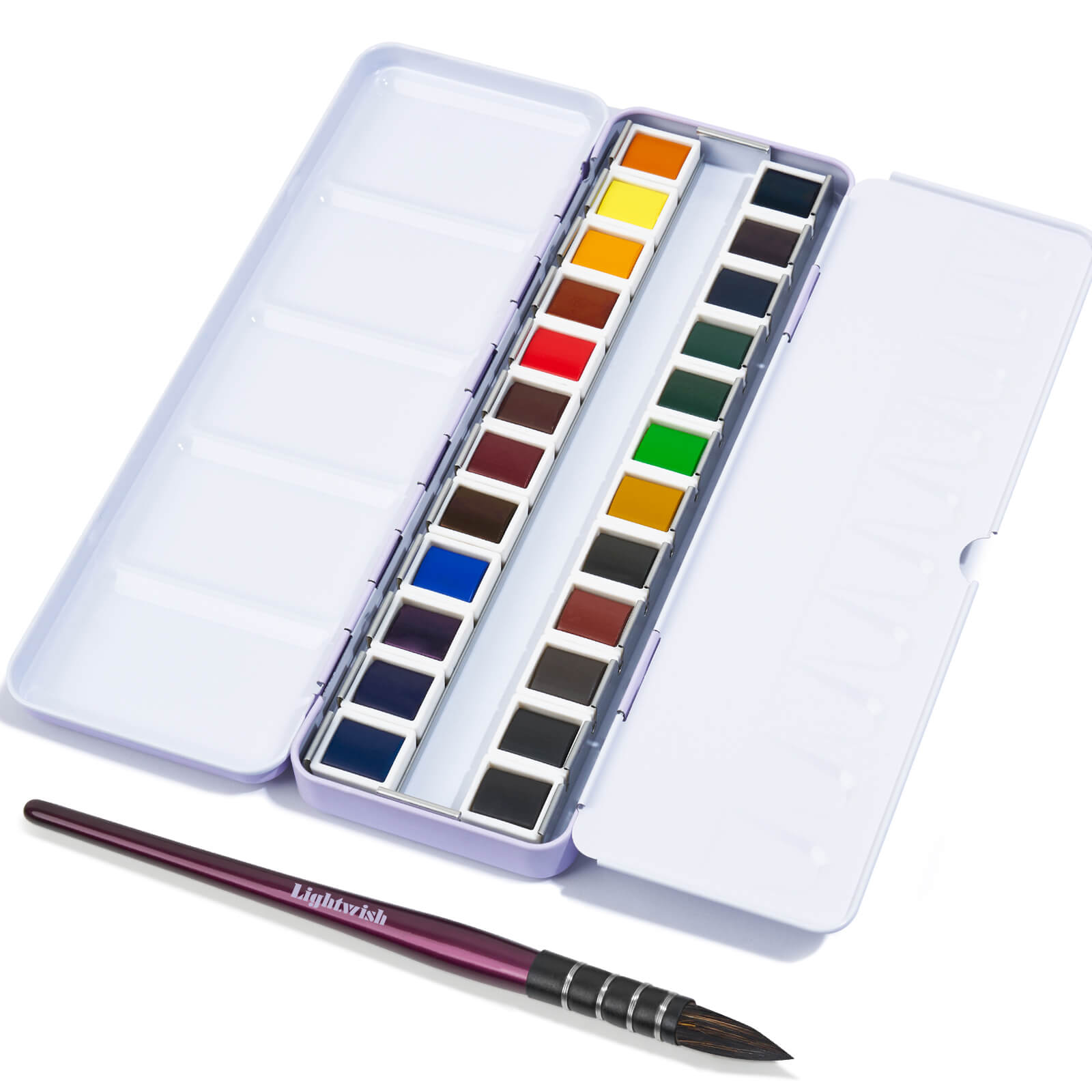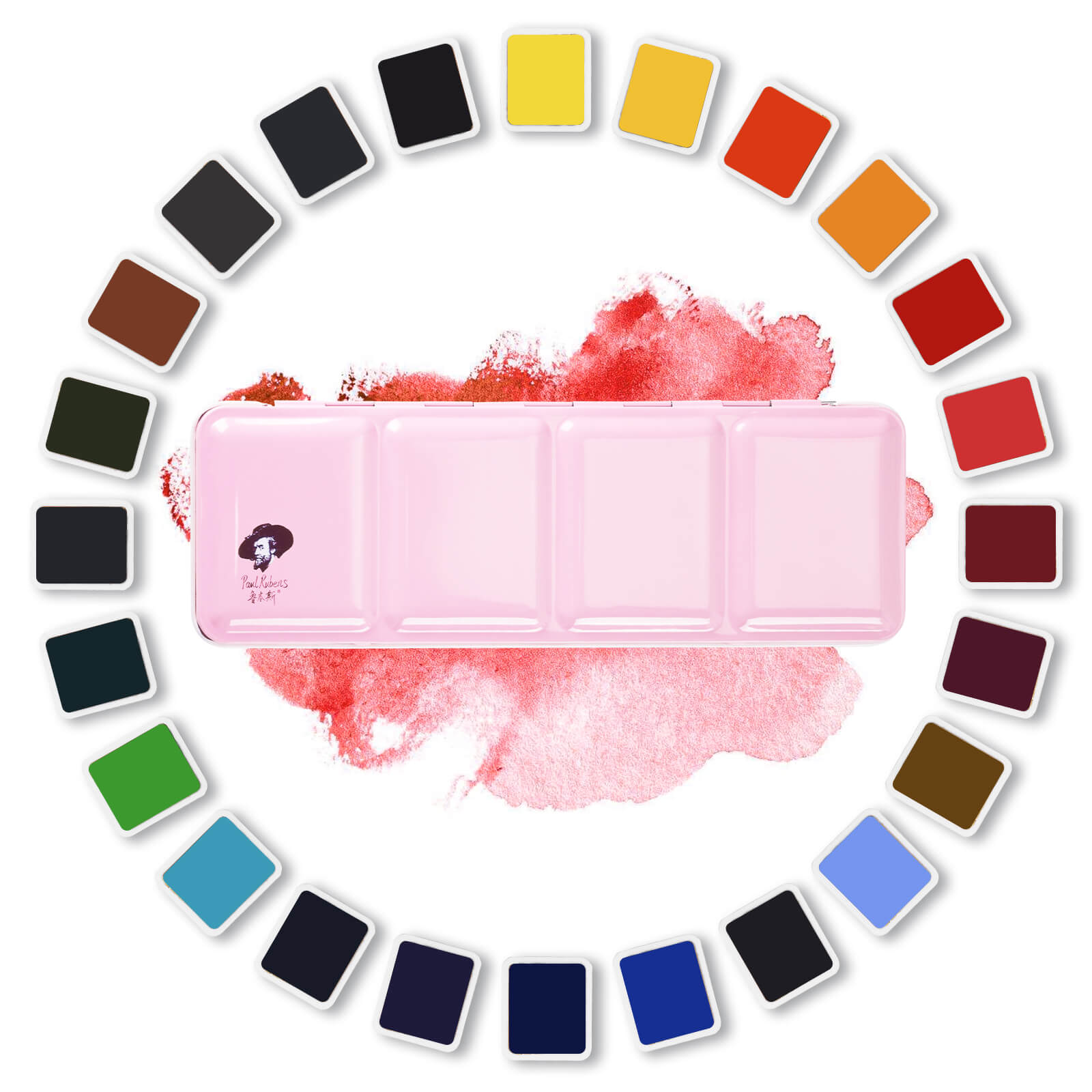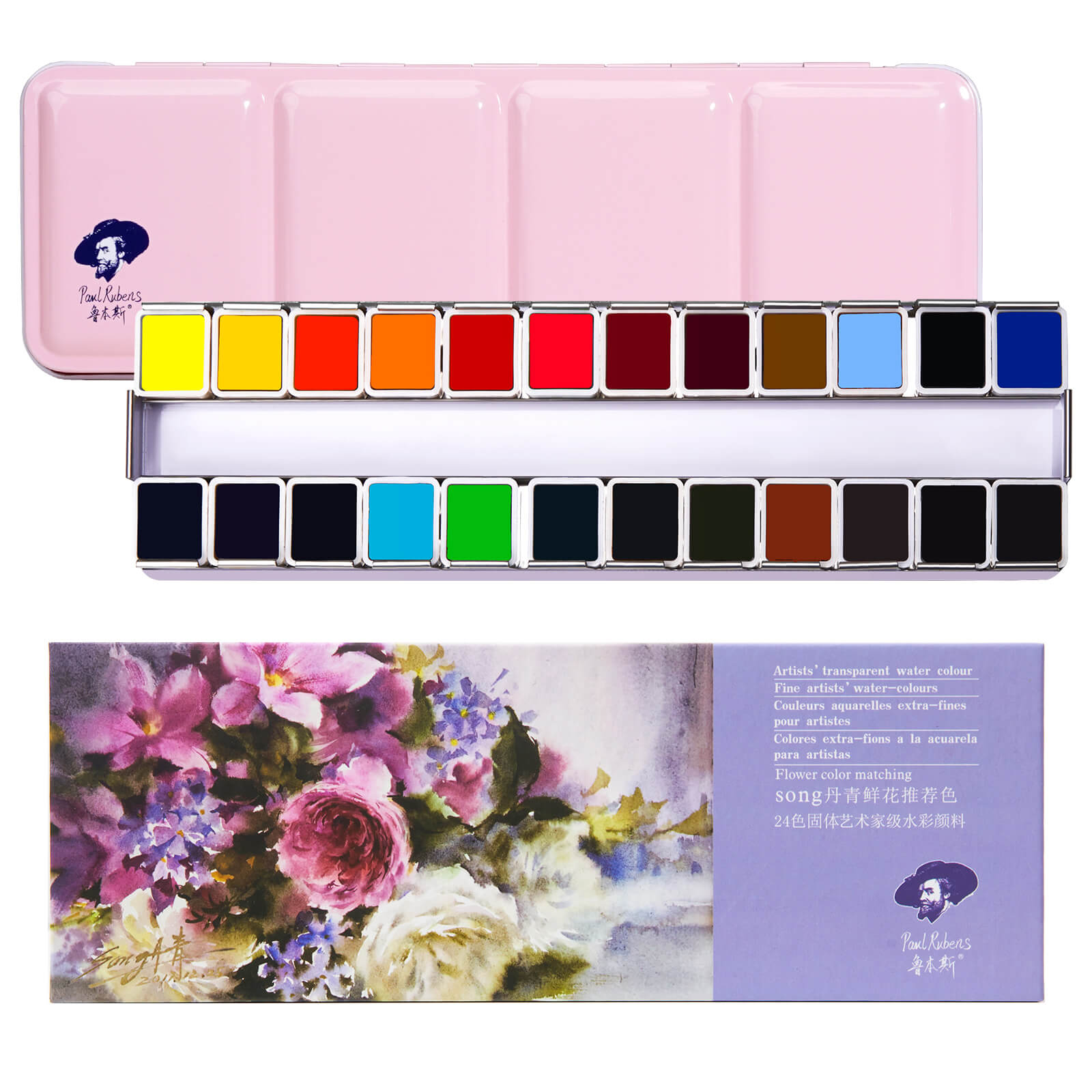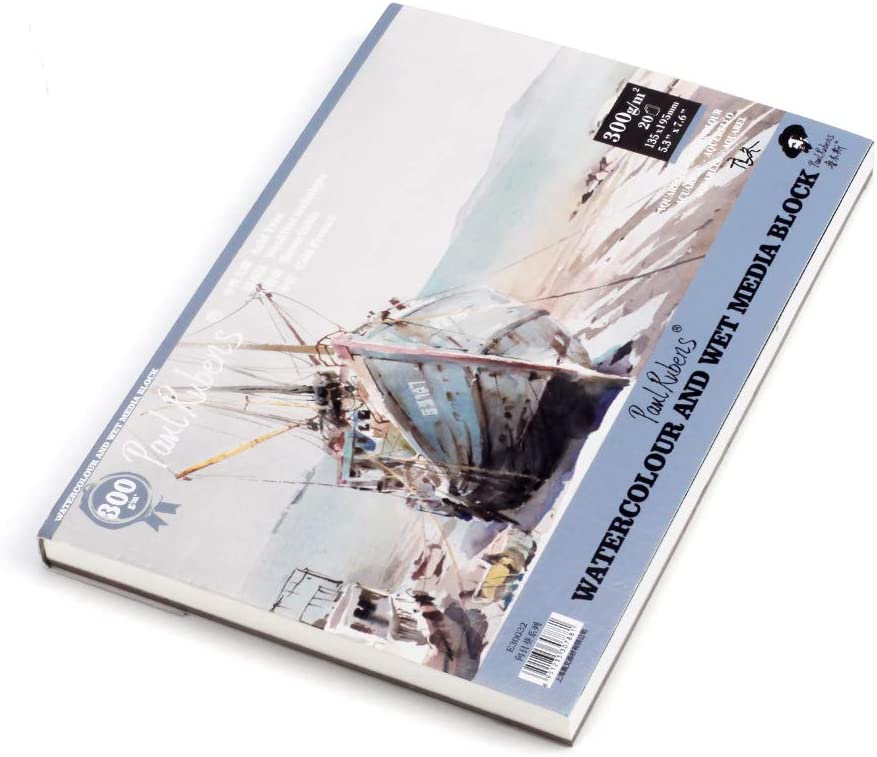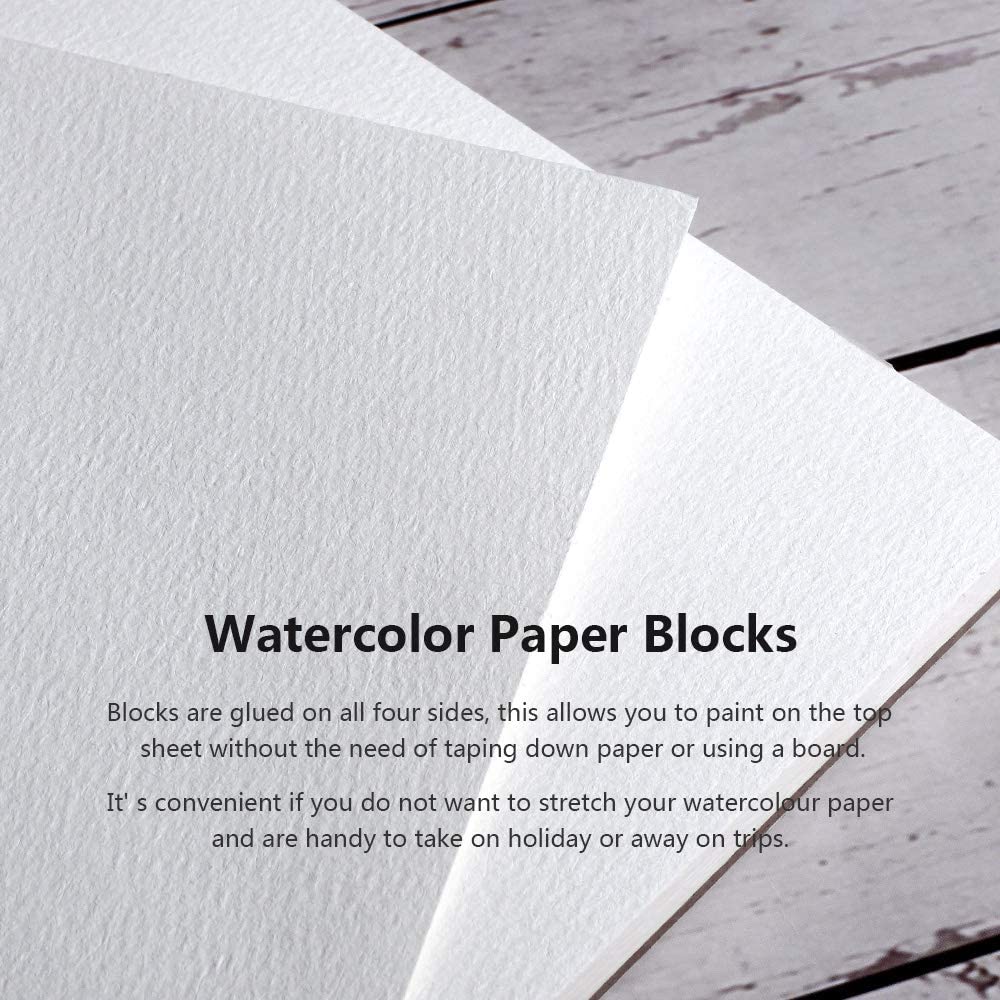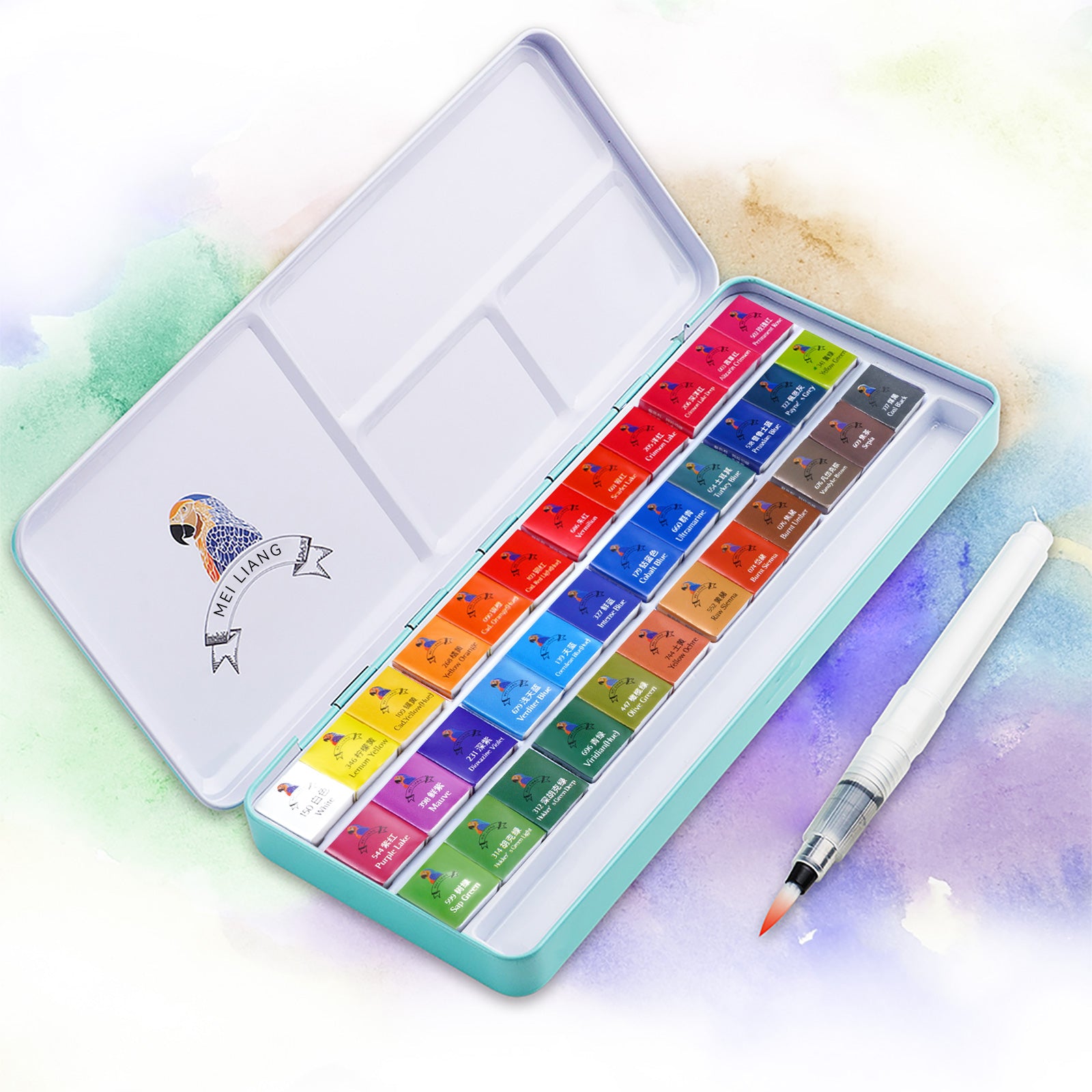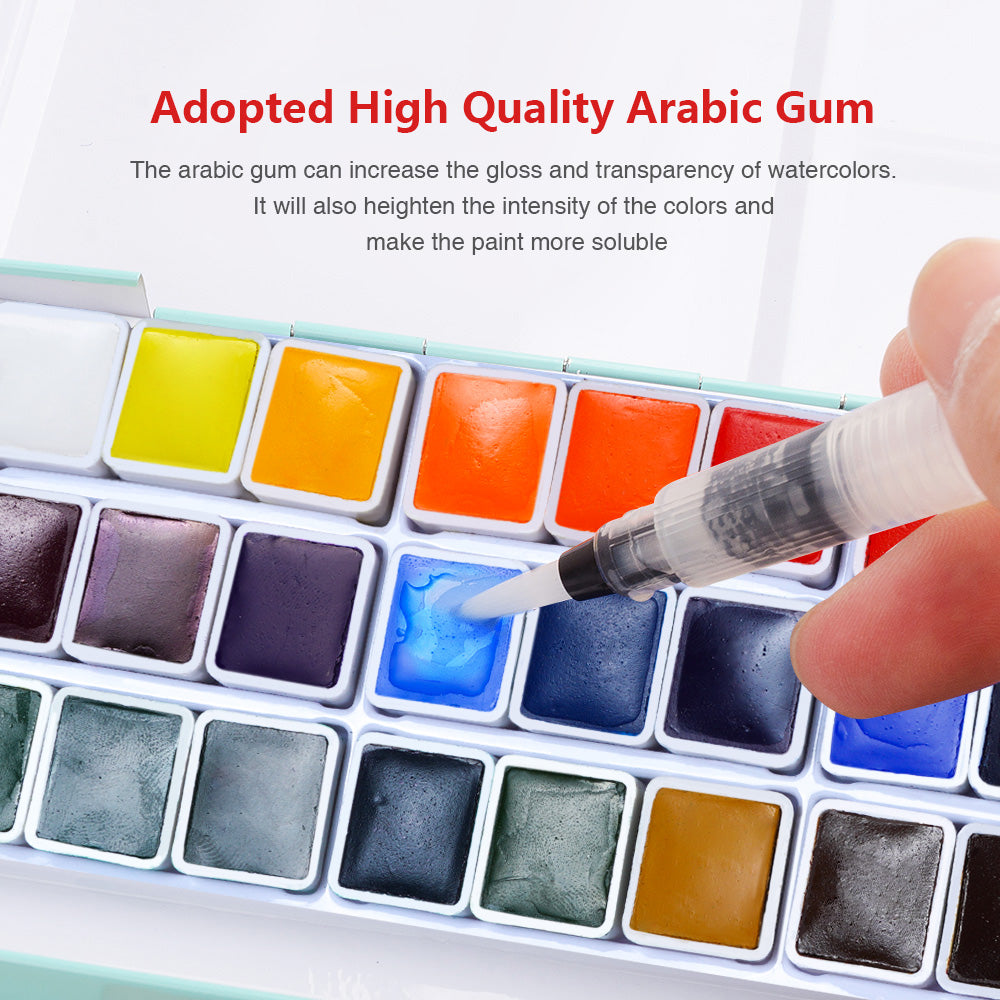What's the best watercolor paint? This is a question that beginners and even seasoned artists often ask. To be honest, there is no single "best" option. It really depends on your needs, style, and budget. This is not just a list of recommendations. This guide will help you understand the differences between watercolor paints so you can make an informed decision. You need to think about things like the type of paint, how thick it is, how easy it is to carry, and other factors. For example, if you need to carry watercolors on a trip, you should think about how easy it is to carry them. If you're painting at home, a highly rated watercolor set with many colors might be what you need.
1. Understanding Watercolor Paint: The Basics
Before we get to specific brands, let's break down what makes up watercolor paint. Understanding these components will help you appreciate the differences between student-grade and artist-grade paints.
-
Pigment: This is the finely ground powder that provides the color. The quality and concentration of the pigment directly impacts the vibrancy, lightfastness (resistance to fading), and staining properties of the paint. Single-pigment paints are generally preferred for mixing clean, predictable colors.
-
Binder: This is what holds the pigment together and allows it to adhere to the paper. Gum arabic is the traditional binder, offering excellent transparency and re-wettability.
-
Additives: These can include humectants (like honey or glycerin) to improve flow and prevent cracking, wetting agents to improve water absorption, and preservatives to prevent mold growth.
2. How to Choose Watercolor Paints: A Deep Dive
Okay, now for the nitty-gritty! Deciding on the "best watercolor paint" for you involves considering several factors.
Student Grade vs. Artist Grade: What's the Difference?
This is the big one.
-
Student Grade: These paints are designed to be affordable, using less pigment and more fillers. Colors may be less vibrant and lightfastness may be questionable. They're great for beginners, kids, or practicing techniques without breaking the bank.
-
Artist Grade (Professional Grade): These paints use a higher concentration of pure pigment, resulting in more vibrant, lightfast, and durable colors. They tend to have a smoother consistency and re-wet beautifully. They're an investment, but well worth it for serious artists.
Considering Pigment Quality: Durability of color and texture
- How well the colors last: This is very important! Look for paints with a lightfastness rating of "Excellent" or "Very Good." These ratings show how well the paint will resist fading over time when exposed to light. It's really frustrating when paint fades easily, especially after you've put a lot of effort into a painting. Don't settle for anything less than "good."
- Granulation: Some pigments naturally form little balls, which create a textured, speckled effect on the paper. This can make your paintings look more beautiful. Some examples of these pigments are Ultramarine Blue and Raw Sienna. If you don't want granulation, choose pigments that are known for their smooth wash.
Learn about how transparency and staining properties work
- Transparency: Transparent paints allow light to pass through them, revealing the layers underneath. This is perfect for glazing techniques. Some examples of these colors are Alizarin Crimson and Phthalo Blue.
- Opacity: Opaque paints block light, covering the layers underneath. They're useful for creating highlights and fixing mistakes. Some examples of this include Cadmium Yellow and Chinese White.
- Staining: Staining paints stick really well to the paper fibers and are hard to remove. Non-staining paints are easier to remove, making them perfect for making corrections and creating soft washes.
Lightwish Watercolor Paint Set 128 Colors

3. Watercolor Pan vs. Tube: Which is Right for You?
This is a matter of personal preference and painting style.
-
Pans: These are dried watercolor paints in small, rectangular or round containers.
- Pros: Portable, easy to organize, good for layering and glazing.
- Cons: Can be difficult to re-wet if they dry out completely, limited color selection in some pre-made palettes.
-
Tubes: These are watercolor paints in a paste-like consistency.
- Pros: Easy to mix large quantities of color, can be re-wet easily, wider color selection.
- Cons: Can be messy, less portable than pans.
Portability and Travel-Friendliness: Taking Your Art on the Road
Do you envision yourself painting landscapes en plein air (outdoors)? Then portability is key!
- Compact Palettes: Look for small, lightweight palettes with built-in mixing wells. Many brands offer travel-friendly palettes with a selection of essential colors.
- Water Brushes: These brushes have a built-in water reservoir, eliminating the need for a separate water container. Perfect for sketching and painting on the go!
- Empty Watercolor Tins: You can create your own custom travel palette by filling empty watercolor tins with your favorite tube paints. Let them dry completely before traveling.
Lightwish Watercolor Paint Set Artist Grade 48 Colors

4. Tips for Using Watercolor Paints
- Use Good Quality Paper: Watercolor paper is specifically designed to absorb water and hold pigment without buckling or warping. Look for paper that is 140lb (300gsm) or heavier.
- Start with Light Washes: Build up your colors gradually by layering thin washes.
- Control the Water: The amount of water you use will affect the intensity and flow of the paint. Experiment to find the right balance.
- Clean Your Brushes Regularly: This will prevent colors from becoming muddy.
- Embrace Mistakes: Watercolor is a forgiving medium. Don't be afraid to experiment and learn from your mistakes!
5. FAQs: Your Watercolor Paint Questions Answered
(1) How do I make my watercolor paintings more vibrant?
Use artist-grade paints with a high pigment concentration, choose vibrant colors, and layer your washes carefully. Also, avoid overworking the paint, which can make it look muddy.
(2) Can I use watercolor paints on canvas?
Yes, but you'll need to prime the canvas with a special watercolor ground first. This creates a surface that watercolor paints can adhere to.
(3) How do I store my watercolor paints?
Store your paints in a cool, dry place away from direct sunlight. Keep pan sets closed to prevent dust from accumulating. Tube paints should be tightly capped.
(4) Are watercolor pencils considered watercolor paints?
Not exactly. Watercolor pencils are colored pencils with a water-soluble binder. They're fun to use for sketching and adding details, but they don't offer the same level of control and transparency as traditional watercolor paints. They are a good companion to them!
6. Conclusion
In the end, the "best watercolor paint" is the one that works best for you. Try different types to find what you like. Don't be afraid to try new things and develop your own unique style. If you like creating beautiful landscapes or fun illustrations, you'll enjoy learning how to paint with watercolors. Now go out and paint! Have fun painting!

